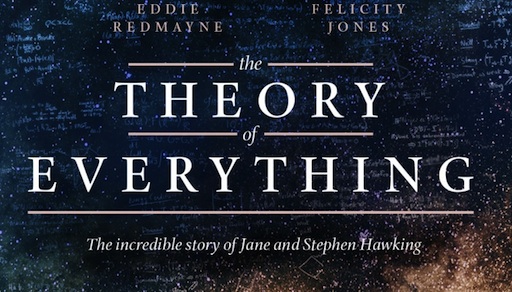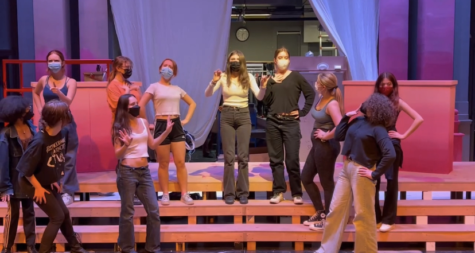The Theory of Everything – But Love

The Theory of Everything is an inspiring drama about two people overcoming a death sentence that is handed to one of them, the renowned astrophysicist Stephen Hawking, whose marriage to Jane Wilde tested the limits of love. It is astonishing to watch Stephen Hawking (Eddie Redmayne) display his ability to maintain a strong sense of humor and bold optimism despite the adversities he confronts. The symbolic lighting and production design add considerably to this beautiful, complex romance. The theories that Stephen created were ingrained in the subtextual moments in the film.
The film was adapted from Jane Hawking’s memoir Traveling to Infinity: My Life With Stephen by Anthony McCarten. In 1963, Stephen is a cosmology student at Cambridge University and beginning his search to find a “simple, eloquent explanation” for the start of time and the universe. After he and language major, Jane Wilde (Felicity Jones) fall deeply in love, his narrow world opens up. However, as healthy and active 21-year-old Stephen seems, he is soon tragically diagnosed with motor neuron disease, which will destroy his muscles, leaving him with limited speech and movement and threaten to kill him within two years. Newly married to Jane, Stephen learns to cope with his disease through her love, support, loyalty, and determination as she fights tirelessly by his side. In the early years of the marriage, Stephen attempts his most ambitious scientific work, studying what he himself has very little of: time. As his body faces increasing challenges, his mind continues to explore the outer limits of theoretical physics. Widowed choirmaster Jonathan Hellyer Jones (Charlie Cox) helps the family manage with their first two children. The Hawking family later receives help from Elaine Mason (Maxine Peake), who coaches Stephen after he loses his voice and seems to understand him. When Jonathan and Elaine enter the story, Stephen and Jane’s marriage begins to crumble when they find themselves tempted by infidelity.
Eddie Redmayne dominates the screen and grips the viewer with his precise impersonation of Stephen. The level of commitment required to embody science’s most famous icon was immense because of the physical demands that were required to play Stephen Hawking. Redmayne appeared incredibly devoted to his character as well as the physical and psychological preparation he had to undergo. Due to the lack of existing documentation of Stephen Hawking in the early stages of deterioration, Redmayne was instructed to consult with a doctor who specialized in motor neuron disease to chart the progression. The Theory of Everything was shot out of sequence and Redmayne created a chart that enabled him and his colleagues to know on any given day how he should be playing Stephen, since each stage of his illness required different body language, facial expressions, and speech. He also visited a dance choreographer to help him learn to isolate his body and “dancing from within”. These arrangements would guide Redmayne to learn exactly how to position and move his body during particular moments in the film.
Felicity Jones built a deep characterization of Jane, walking a thin line between frailty and strength. Jones conveyed how hard it is to love someone suffering from a near fatal illness and the burden it puts on her career. Jones’s subtle acting emphasized Jane’s dedication to Stephen as well as her struggle to maintain her sense of identity. It was important for her to be recognized in her own right, which was why she continued with her education after marrying him. However, she is frustrated with the situation as Stephen’s incapacity becomes a distraction for her while trying to focus on her studies.
James Marsh, who previously directed the Academy Award winning documentary Man on Wire, used beautiful and symbolic imagery to complement such a complex, dramatic storyline. He depicted Stephen’s cosmological ideas through simplicities such as cream swirling in a coffee cup, spectacular fireworks, and flames in a fireplace visible through holes in a sweater stuck on his head. The lighting was also phenomenally controlled, as it clearly set the tone for different scenes and gave the film an extremely human aesthetic in contrast to Hawking’s defiance of conventional human boundaries and limitations
I was lucky enough to visit the Screen Actors Guild where Felicity Jones and Eddie Redmayne spoke about their inspiration after a screening of the film. They talked about their tedious rituals and practices in preparation for becoming these complicated characters and how much hard work was put into these roles. It was after watching this brilliant film and an intimate interview with the main actors that I realized that while Stephen Hawking attempted to come up with a theory to explain the mysteries of the universe, he was unable to devise a theory for possibly the most complex thing of all: love.






